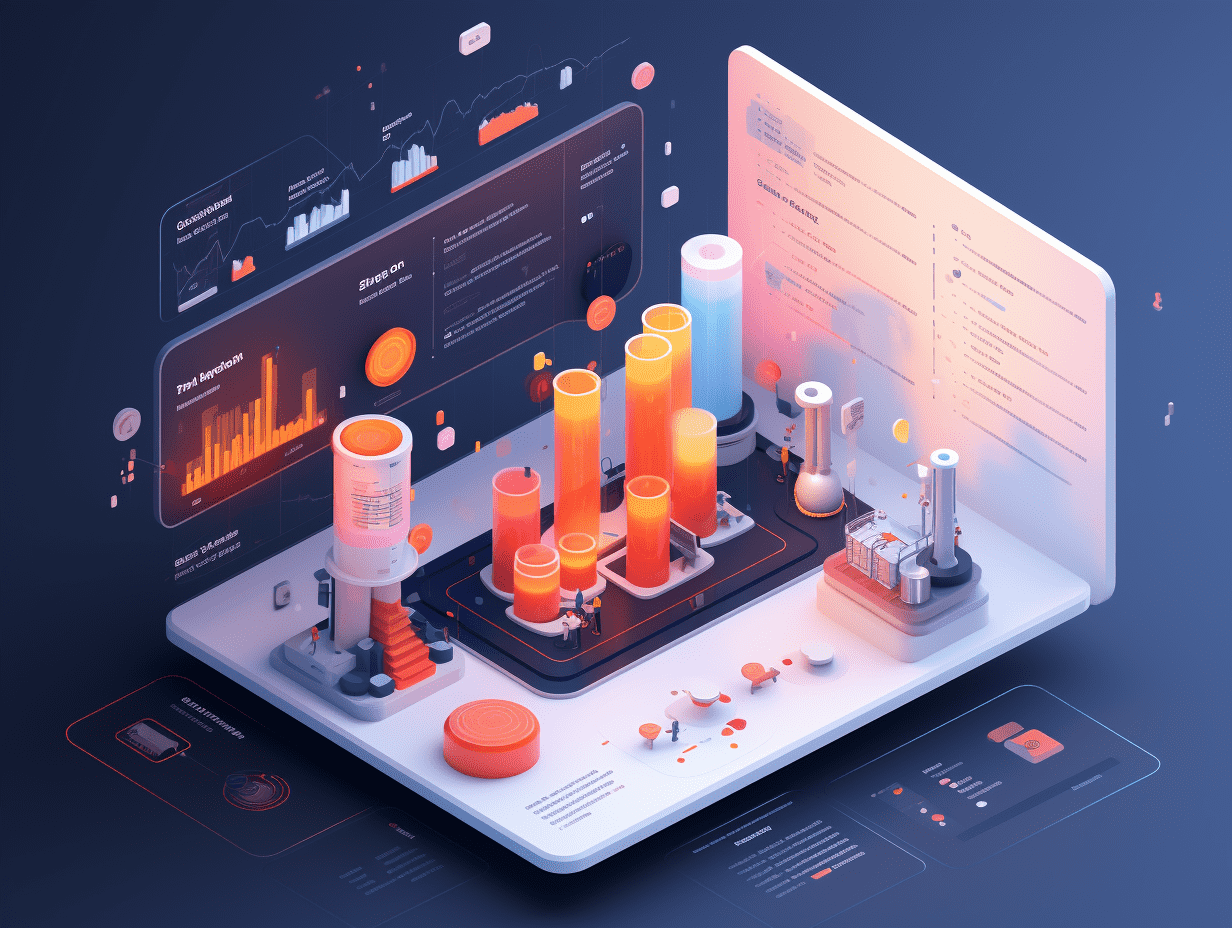CITIC SEC: International capital interaction is heating up, with technological innovation and new drug iterations driving a new round of high growth.
2025 is the best opportunity to lay out the excellent track and top core enterprises in the medical and health industry, it is recommended to continue to pay attention to the medical and health industry.
, CITIC SEC released a research report stating that in the field of innovative drugs, the iterative technology and BD around core products/areas remain the growth engine for Pharma; in terms of CXO and upstream life sciences, upstream research and development demand is gradually recovering, and domestic stimulus policies are expected to boost demand in the life sciences sector; in the medical device sector, the focus is on technology innovation and product iteration, exploring new areas and enhancing product competitiveness; in the vaccine sector, continued research and development of high-price secondary and innovative vaccines remain the focus of MNC enterprise vaccine pipeline development. The international capital interaction in the medical health industry is hot, and technological innovation is driving the development of the medical health industry. 2025 is the best opportunity to lay out the excellent track and core enterprises in the medical health industry at the bottom, and it is recommended to continue to pay attention to the medical health industry.
Event: The 43rd J.P. Morgan Healthcare Conference was held in San Francisco, USA from January 13 to 16, 2025.
Key points from CITIC SEC are as follows:
The 43rd J.P. Morgan Healthcare Conference (hereinafter referred to as the "Conference") was held in San Francisco, USA from January 13 to 16, 2025.
As the largest and most content-rich healthcare investment conference in the industry, it brings together global industry leaders, emerging fast-growing companies, innovative technology creators, and investors. Based on the communication disclosed by participating companies, we have organized and summarized the following hot information:
Innovative drugs: Iterative technology and BD around core products/areas remain the growth engine for Pharma
From the perspective of technological development trends: new mechanisms and new types of ADCs have become the focus of development, with companies like First-Third Joint, ADC Therapeutics, Kolonpolite, INNOVENT BIO showcasing new ADC technology platforms (new targets, new mechanism toxins, new coupling technologies, non-cell toxins as Payload, etc.); the new generation of IO (PD-1/VEGFR, PD-1/TIGIT, PD-1/IL-2, IL-15, etc.) is expected to relay as the next generation of global blockbuster products, and is expected to have positive data reads/milestones in 2025.
BD is still the core growth engine for Pharma, but preferences vary among companies: most Pharma are more focused on early clinical assets. Assets around potential large single products/core areas of Pharma will become the preferred BD - Merck & Co. and Pfizer will explore combination therapy around oral GLP-1 small molecules; Abbvie will focus on combination therapy around Lifesciences and Upatini.
Looking at potential catalysts for Pharma/Biopharma in 2025: AstraZeneca and Roche are expected to have multiple potential blockbuster Phase III data reads in 2025; Lilly's 2025 revenue midpoint guidance reached 32%; BEIGENE is expected to achieve positive full-year operating profit in 2025, with 9 new molecule POC data reads.
CXO and upstream life sciences: Upstream research and development demand is gradually recovering, and domestic stimulus policies are expected to boost demand in the life sciences sector
CXO: Early-stage research and development is gradually recovering, while back-end demand remains strong. Both CRL and Labcorp stated that the research and development demands of their Biotech clients are showing signs of recovery, but IRA's impact on Biopharma is still ongoing, and pipeline optimization and research and development spending reductions will impact short-term business. Clinical CROs such as ICON PLC have seen order cancellations in 24Q2-Q3, and expect them to continue in 25H1. Back-end commercial production demand remains strong.
Upstream life sciences: Pharmaceutical demand is gradually recovering, with optimistic expectations for the boost in demand from domestic stimulus policies. Upstream service providers in the life sciences sector represented by Agilent, Danaher, Merck KGaA, and Thermo Fisher stated that global pharmaceutical research and development demand is gradually recovering, with the "worst" times already behind them. Several companies emphasized the positive order contribution from recent domestic stimulus policies (a key topic of discussion at this conference), and maintained optimistic expectations for the future of the Chinese market; Danaher expects the Chinese market to grow at a high single-digit to low double-digit rate in the medium to long term.
Medical devices: Focus on technology innovation and product iteration, exploring new areas and enhancing product competitiveness
High-value consumables: Cardiovascular intervention remains a key business segment for global giants such as Medtronic, Boston Scientific, and Johnson & Johnson, among others, with pulsed field ablation (PFA) being a key battleground that drives the electrophysiology to become one of the fastest growing segments in the medical device market.
Most primary PFA products from major manufacturers are already approved and on the market, and three-dimensional systems, linear catheters, dual-energy ablation, etc., are becoming the next generation of PFA products. Intravascular lithotripsy (IVL) is another popular technology, with companies like Johnson & Johnson and Boston Scientific making acquisitions to enter the market. Structural heart disease is still an area with severely inadequate penetration, high growth and high-profit margins, worth keeping an eye on for artificial valves, left atrial closure, and heart failure treatment. With technological advances, neuromodulation is expected to become the next hot spot in the high-value consumables sector.
Ophthalmology: The industry continues to introduce new technologies, and product pipelines are continuously iterated and upgraded.
Bausch Lomb has developed and launched approximately 60 R&D projects, focusing on unmet needs in the eye health sector, including next-generation contact lens technology, innovative drugs, and accommodative artificial lenses, etc. The company achieves long-term sustainable growth by continuously introducing new technologies and products.
Medical equipment: Innovation and AI empowerment are leading the growth of devices by Xiong'an New Power Technology.
1) The strategic blueprints of giants such as GE, Siemens, and Intuitive Surgical all emphasize a continuous increase in AI, with deep integration of artificial intelligence into devices to achieve precision medicine, which not only changes product performance but also innovates business models, AI is expected to continue to empower medical scenes in the next few years;
2) Innovative products contribute to the growth of multinational medical device giants, with PFA and LCompanies such as AAC, Insulet (Omnipod 5), and Medtronic (RDN, PFA, neuro modulation) continue to invest in innovation through mergers and acquisitions or self-research, enriching and improving their new product portfolio to drive growth.IVD: Structural opportunities are the focus of layout, and synergies are the advantage of platformized enterprises.
From the perspective of IVD companies such as Danaher, QuidelOrtho, industry giants' revenue growth has been maintained at single-digit levels, relatively slowing down. However, looking ahead, industry giants have expressed interest in structural opportunities. Danaher, with successful experience in acquiring Cytiva, still hopes to achieve long-term value creation through strategic acquisitions, continuously empowering synergies through its own business system; QuidelOrtho is targeting high-growth markets (such as molecular diagnostics) to drive revenue, while internal synergy and operational optimization bring profit contributions.
CGM: The potential of low penetration rate diabetes patients is enormous, and product iterations enhance competitiveness.
According to the exchange of information from Dexcom, in the US diabetes market, the penetration rates of CGM for type 1 diabetes patients and type 2 patients treated with insulin are 60%/50%-55%, respectively. Non-insulin type 2 patients, gestational diabetes patients, and other groups have greater potential for expansion, and the international market is also expected to further expand coverage. In addition, under the innovation and iteration of the CGM industry, product competitiveness is expected to be enhanced, such as sensor usage time, personalized software analysis, integration of generative artificial intelligence (GenAI) to provide personalized insights, etc., are all directions for industry upgrade.
Vaccine section: Continuous development of high-value incremental and innovative vaccines remains a focus of MNC companies' vaccine pipeline development.
The pursuit of higher-value incremental vaccines, such as ABCWY meningococcal conjugate vaccines, is reflected in the pipelines of vaccine giants such as GSK and Sanofi. In the fiercely competitive PCV vaccine market, Pfizer has launched PCV20 vaccine, Merck has launched PCV21 vaccine (18 years and older), GSK's acquisition of Affinivax's PCV24 is in Phase II clinical trials, and the Phase II clinical trials of Vaxcyte's PCV31 have been completed.
In addition, RSV vaccines with global blockbuster potential, although limited in FDA indications for the elderly, still have enormous potential in the market for pregnant women and children. The market also has high hopes for Pfizer's Abrysvo (for use in pregnant women) and Sanofi's Beyfortus (RSV monoclonal antibody), with Bloomberg consensus forecasts predicting that by 2025, Pfizer's Abrysvo sales could reach $1.3 billion and Sanofi's Beyfortus sales could reach $1.99 billion.
In the domestic market, companies such as Chongqing Zhifei Biological Products (PCV15), Shenzhen Kangtai Biological Products (PCV20), CanSino Biologics Inc. (PBPV broad-spectrum type), Beijing Wantai Biological Pharmacy Enterprise (PCV20), Trimer Biologics (RSV), Changchun Bcht Biotechnology (RSV), etc., are developing high-value incremental PCV vaccines and RSV vaccines.
Investment strategy
Pharmaceuticals and innovative ShenZhen New Industries Biomedical Engineering: The US pharmaceutical policy is currently in a relatively unstable period, and the direction of the Trump 2.0 policy is closely watched. The negative impact of IRA on Pharma is relatively controllable, and there may be possible legislative amendments. From the perspective of technological development trends, new mechanisms and new types of ADCs have become a development focus; the new generation of IOs is expected to become the next generation of global flagship products, with positive data expected to continue to be released/landmark events expected in 2025. BD remains the core growth engine for Pharma, but each company has different preferences. Most Pharma companies focus more on early-stage clinical assets; BD assets around their own blockbuster/core areas are preferred - such as combination therapy around oral GLP-1 small molecules and combination therapy in their own immune fields (oral/long-acting). From the perspective of upstream companies, global pharmaceutical research and development demand is in a mild recovery phase, and backend demand remains strong; equipment updates stimulating policy for boosting domestic demand also become one of the hot topics of this conference.
Medical industry chain end: Core focus on industry technical innovation and product iteration. In terms of high-value consumables, pulsed-field ablation (PFA) in the cardiovascular intervention field is driving the electrophysiology industry to become one of the medical device sectors with the highest market growth rate, while it is also recommended to focus on structural heart disease and neuromodulation hot spots. In ophthalmology, the direction of technological and product iteration includes new generation contact lens technology, innovative drugs, and accommodating artificial lenses. In medical equipment, many giants in their strategic blueprints emphasize continuous investment in AI, and the next few years are expected to see continuous empowerment of AI in specific medical scenarios, while innovative products contribute to the incremental growth of multinational medical device giants. In the IVD sector, industry giants believe that structural opportunities are the focus of layout, such as targeting high-growth markets (such as molecular diagnostics), and making good use of synergies as an advantage of platformized enterprises. In the CGM sector, the potential of low penetration rate diabetes patients is enormous, and giants are also enhancing competitiveness through product iterations. In the vaccine sector, continuous development of high-value incremental and innovative vaccines remains a focus of MNC companies' vaccine pipeline development.
The international capital interaction in the medical and health industry is hot, and technological innovation drives the development of the medical and health industry. 2025 is the best opportunity to layout the excellent track and core enterprises of the medical and health industry at the bottom. It is recommended to continue to pay attention to the medical and health industry.
Risk factors: Intensification of geopolitical frictions; risks of macroeconomic recovery falling short of expectations; risks of centralized drug procurement; risks of declining heat in primary market biopharmaceutical company financing; risks of greater-than-expected price cuts and progress in centralized procurement of high-value consumables; risks of failure in clinical development of innovative drugs; risks of increased commercial competition; risks of unstable US-China pharmaceutical policies; risks of medical insurance policies for medical services.Risk; medical accident risk, etc."Bonjour, comment a va aujourd'hui?"
"Hello, how are you doing today?"
Related Articles

Suzhou Gold Mantis Construction Decoration (002081.SZ) plans to donate 3 million yuan to the Suzhou Gold Mantis Construction Decoration Public Welfare Charity Foundation.

The actual controller of Guangxi Oriental Intelligent Manufacturing Technology (002175.SZ) will be changed to Guangxi State-owned Assets Supervision and Administration Commission, and trading will resume on December 22nd.

KIDDIELAND (03830) announced its interim financial performance, with a 30.57% year-on-year decrease in net profit attributable to shareholders to HK$3.85 million.
Suzhou Gold Mantis Construction Decoration (002081.SZ) plans to donate 3 million yuan to the Suzhou Gold Mantis Construction Decoration Public Welfare Charity Foundation.

The actual controller of Guangxi Oriental Intelligent Manufacturing Technology (002175.SZ) will be changed to Guangxi State-owned Assets Supervision and Administration Commission, and trading will resume on December 22nd.

KIDDIELAND (03830) announced its interim financial performance, with a 30.57% year-on-year decrease in net profit attributable to shareholders to HK$3.85 million.






